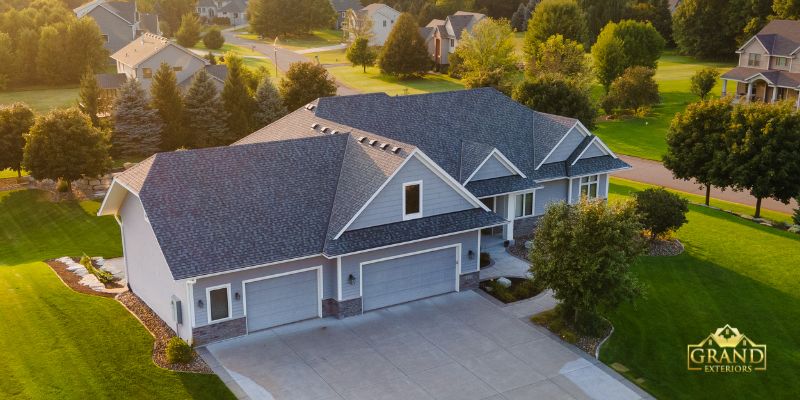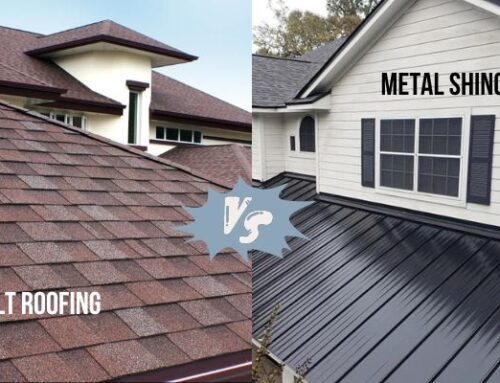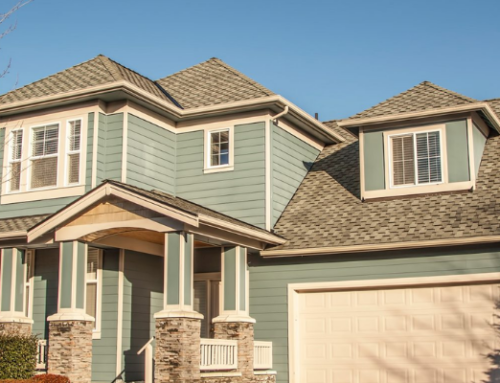The roof of your home is one of its most critical components. Not only does it protect you and your belongings from the elements, but it also plays a significant role in your home’s overall aesthetic appeal and energy efficiency.
When it comes to choosing the right roofing material for your residential property, the decision can be overwhelming. With numerous options available, each with its own set of advantages and disadvantages, it’s essential to consider several key factors before making a choice. In this article, we’ll explore five key considerations to help you select the perfect roofing material for your home.
1. Climate and Weather Conditions
One of the first and most critical factors to consider when choosing a roofing material is the climate and weather conditions in your area. The local climate will significantly impact the performance and lifespan of your roof. Different roofing materials are better suited to various climates. Here are some considerations based on climate:
- Extreme Heat: If you live in a region with scorching hot summers, like the southwestern United States, you’ll want a roofing material that can reflect sunlight and heat. Metal roofing, concrete tiles, and clay tiles are excellent options for hot climates as they are reflective and have good insulation properties.
- Cold and Snowy: In areas that experience harsh winters with heavy snowfall, such as the northern United States and Canada, a roofing material with excellent insulating properties and the ability to shed snow is crucial. Asphalt shingles, metal roofing, and slate are popular choices for cold climates.
- High Winds: If your area is prone to strong winds, it’s vital to choose a roofing material that can withstand these conditions. Metal roofs, clay tiles, and concrete tiles are all durable options that can handle high winds well.
- Coastal Areas: Homes in coastal regions are exposed to saltwater and high humidity, which can be corrosive. Consider metal roofing with corrosion-resistant coatings, such as aluminum or stainless steel, to withstand these conditions.
Understanding your local climate and the unique weather conditions in your area is the first step in selecting a roofing material that can stand up to the elements and provide long-lasting protection for your home.
2. Cost and Budget
The cost of roofing materials can vary significantly, and your budget will play a significant role in determining which material is the right choice for your home. It’s essential to consider both the initial cost of the material and the long-term cost of ownership, including maintenance and repairs. Here’s a breakdown of some common residential roofing materials and their cost considerations:
- Asphalt Shingles: Asphalt shingles are one of the most affordable roofing options. They are widely available and come in various styles and colors to suit your home’s aesthetics. However, they may have a shorter lifespan compared to other materials and may require more frequent replacement.
- Metal Roofing: Metal roofing, while more expensive upfront, offers exceptional durability and longevity. It is a cost-effective choice over the long term due to its low maintenance and energy-efficient properties.
- Wood Shingles and Shakes: Wood shingles and shakes provide a unique and natural look but can be costly. They require regular maintenance to prevent decay and rot, adding to the overall cost.
- Slate and Clay Tiles: Slate and clay tiles are known for their beauty and longevity but are among the most expensive roofing materials. They are a substantial upfront investment but can last for a century or more with minimal maintenance.
- Composite Roofing: Composite roofing materials, such as synthetic slate or cedar shake alternatives, offer a compromise between aesthetics and cost. They can mimic the look of premium materials while being more budget-friendly.
Consider your budget and long-term financial goals when choosing a roofing material. While a lower-cost option might be attractive initially, it may require more frequent repairs and replacements, ultimately costing you more in the long run.
3. Aesthetics and Architectural Style
Your home’s roof plays a significant role in its overall curb appeal. The choice of roofing material can greatly impact the aesthetics and architectural style of your house. It’s crucial to select a material that complements your home’s design and enhances its beauty. Here are some considerations:
- Asphalt Shingles: Asphalt shingles are versatile and come in a wide range of colors and styles. They can mimic the appearance of other roofing materials, making them suitable for various architectural styles, from traditional to modern.
- Metal Roofing: Metal roofing is available in a variety of finishes and profiles, making it adaptable to various architectural styles. It can provide a sleek and contemporary look or a more rustic appearance, depending on the choice of finish.
- Wood Shingles and Shakes: Wood roofing offers a classic and timeless appearance that complements traditional and cottage-style homes. It’s an ideal choice for homeowners seeking a rustic and natural look.
- Slate and Clay Tiles: Slate and clay tiles are known for their elegance and can enhance the aesthetics of high-end and historic homes. They are particularly well-suited to Mediterranean, Spanish, and Colonial architectural styles.
- Composite Roofing: Composite roofing materials come in various styles, allowing you to achieve the look of premium materials without the associated cost. They can match the appearance of wood, slate, or other materials.
4. Durability and Maintenance
The durability of your chosen roofing material will determine how long it will last and how much maintenance it will require over its lifespan. Some materials are more resilient and require minimal upkeep, while others need regular care to ensure they perform at their best. Here’s a breakdown of durability and maintenance considerations for common roofing materials:
- Asphalt Shingles: Asphalt shingles are durable and can last for 20-30 years with proper maintenance. Maintenance includes periodic inspections, replacing damaged shingles, and cleaning to remove debris.
- Metal Roofing: Metal roofs are exceptionally durable and can last 50 years or more. They require minimal maintenance, mainly consisting of occasional cleaning and inspections to address any potential issues.
- Wood Shingles and Shakes: Wood roofing materials are less durable and require more maintenance. Regular inspections, cleaning, and treatment to prevent decay and mold are necessary.
- Slate and Clay Tiles: Slate and clay tiles are among the most durable roofing materials, with lifespans of 75 years or more. They require little maintenance beyond the occasional inspection.
- Composite Roofing: Composite roofing materials typically offer a balance between durability and maintenance. They are durable and require minimal upkeep, making them a popular choice for homeowners looking for a cost-effective and low-maintenance solution.
5. Energy Efficiency
Energy efficiency is an increasingly important consideration when selecting a roofing material. A roof that can help regulate the temperature in your home can significantly impact your energy bills. Here are some energy efficiency considerations for different roofing materials:
- Asphalt Shingles: Asphalt shingles have limited energy efficiency features. They absorb heat, leading to increased indoor temperatures during hot weather, which can result in higher cooling costs.
- Metal Roofing: Metal roofs are highly reflective and can help reduce cooling costs by reflecting sunlight and heat away from your home. Some metal roofs also incorporate insulation, further improving energy efficiency.
- Wood Shingles and Shakes: Wood roofing materials have natural insulating properties but may not be as energy-efficient as some other options. They can provide decent insulation but may require additional measures to improve energy efficiency.
- Slate and Clay Tiles: Slate and clay tiles have good insulation properties and can help regulate indoor temperatures. They are more energy-efficient compared to some other materials.
- Composite Roofing: Composite roofing materials often have energy-efficient features and can mimic the appearance of premium materials. They can provide a good balance between aesthetics and energy efficiency.
Conclusion
In conclusion, selecting the suitable roofing material for your residential property is a decision that involves careful consideration of various factors, including climate, budget, aesthetics, durability, and energy efficiency. By taking these key considerations into account, you can make an informed choice that protects your home and enhances its beauty and value. Remember that consulting with a professional roofing contractor in Minnesota can be invaluable in helping you make the best decision for your specific needs and circumstances. Your roof is an investment in your home’s future, and choosing wisely will ensure it serves you well for years to come.




